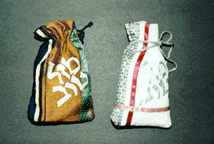

According to the Torah, the notion of marriage dates back to Adam and Eve. It is interesting to note that some believe God actually officiated at the marriage between Adam and Eve. As such it accentuates the important place weddings hold in Judaic life. Moreover one of the mitzvot (commandments) of the Torah is to be fruitful and multiply.
In ancient times marriage was actually the reserving of a woman, for in those days women were considered more like property. In the times of the Bible, marriages were more of an arrangement. While romantic love did exist, parents generally sought out appropriate mates for their children. This practice of arranging unions, between men and women led to the notion of shadchan or matchmaker. In keeping with the concept of women being more like property, the man wishing to marry a daughter paid a sum of money (bride price) to the father for the daughter.
After all women were able to make a home and work very hard, and if a father was now going to lose his daughter, he should be compensated. As time passed the (bride price) became more symbolic and the money was used to purchase the trousseau. The exchange of rings has also developed from the practice of monetary compensation for the bride. The ring, symbolizing value, is given to the bride. Today, the ring also represents a never ending circle similar to a never ending love/marriage.
A wedding cannot occur on certain days of the Jewish Calendar. For example, one cannot get married on Shabbat, the holidays, nor days of fasting. Traditionally Jewish people would wear white at their wedding to symbolize purity. The Shabbat before the wedding, the groom (and bride in liberal settings) is called up to read the blessings over the Torah. This ceremony is called the aufruf.

In addition to the traditional rituals that take place before the wedding, there are key symbols that are associated with the actual wedding day. The huppah (marriage canopy) that we see today is based on the ritual practiced in ancient times where a bride was escorted by the groom to a special room where the couple was able to be alone. A huppah can be a tallit or a velvet cloth. friends of the couple use four poles to support and hold the covering over the Rabbi and couple during the ceremony.
There are many other rituals that Jewish people may complete depending on the sect of Judaism they practice. For example, Orthodox Jews have the bride circle the man seven times during the ceremony in an attempt to symbolize the courting of a man.
Similarly in an Orthodox or Conservative ceremony the Ketubah or marriage contract is read aloud and signed. The Ketubah serves to protect the rights of the bride and ensure her interests are protected.

Another well observed custom is that of the groom breaking a glass at the end of the ceremony. Over time this tradition is carried on to remind us of various things like the destruction of the Temple. This ritual also serves as a reminder that, like a broken glass, marriage is permanent. The loud noise that the breaking makes can also help ward off any evil spirits.
A celebration follows the ceremony where family and friends wish the couple Mazel Tov, a Hebrew phrase that wishes the new couple a good future.
| Back to Life Cycle | Glossary | Jewish Holidays | Treasures | Home Page |